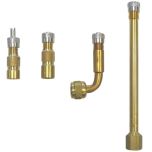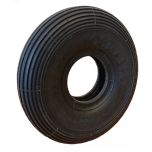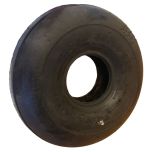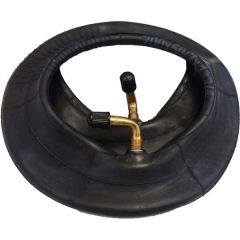TOST 4" Landing Wheel
TOST 4" Landing Wheel
TOST 4" Landing Wheel
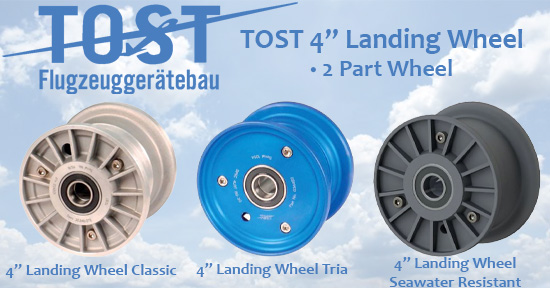

General Description
TOST 4" Landing Wheel Classic - 4′′ Classic Landing Wheels have proven their worth, especially as sturdy nose and main wheels or when used for special purposes. They feature the well-tried deformable fins sector and thus provide a high load capacity combined with compact installation measurements. The wheel halves are manufactured from aluminum diecast and are threefold screwed.
TOST 4′′ Landing Wheel Tria - 4′′ Landing Wheels (LRT) Tria are convenient for applications, in which low weight combined with high strength are the determining factors. Through our CNC manufacturing from the solid, we realize a weight-optimized wheel hub for high loads, with a high-class surface treatment (anodized in blue, other colors available on request) and a threefold bolting with high-tensile wheel bolts. The asymmetric split of the wheel halves allows for easy tire mounting without special tools.
TOST 4′′ Landing Wheel Classic seawater Resistant - For use in amphibians or equipment exposed to saltwater, we manufacture the (LR) 4′′ Landing Wheel Classic also in a seawater-resistant version. With a special surface treatment, bearings from stainless steel with special seals and coated wheel bolts, these wheel hubs are highly corrosion-resistant.
TOST 4″ Landing Wheel price varies depending on selection. Use dropdown box above for selection and final price.
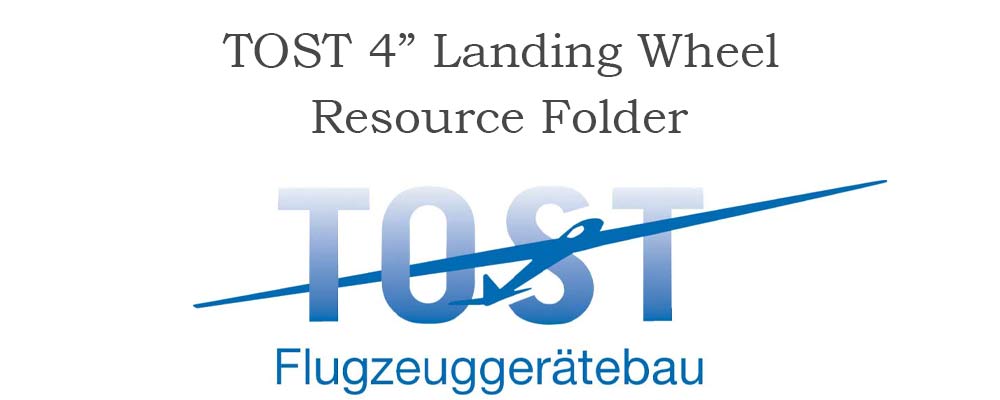

4′′ Landing wheel Classic
|
P/N SKU |
Desc |
Install Width mm |
Bearing ∅ mm |
Tire Size |
Weight g W/O Tire |
Type of Hub |
|
034000 5903 |
4′′ LR Classic 85-20 | 85 | 20 | 4.00-4/3.00-4 260×85 |
1010 | Two-Part |
|
034100 5906 |
4′′ LR Classic 100-17 | 100 | 17 | 4.00-4/5.00-4 260×85 |
1200 | Two-Part |
|
034200 6017 |
4′′ LR Classic 100-20 | 100 | 20 | 4.00-4/5.00-4 | 1140 | Two-Part |
|
034300 6018 |
4′′ LR Classic 100-25 | 100 | 25 | 4.00-4/5.00-4 | 1112 | Two-Part |
|
034400 6015 |
4′′ LR Classic 60-20 | 60 | 20 | 2.80/2.50-4 | 870 | Two-Part |
|
034600 5915 |
4′′ LR Classic 85-17 | 85 | 17 | 4.00-4/3.00-4 260×85 |
1018 | Two-Part |
|
034700 6016 |
4′′ LR Classic 85-25 | 85 | 25 | 2.80/2.50-4 | 990 | Two-Part |
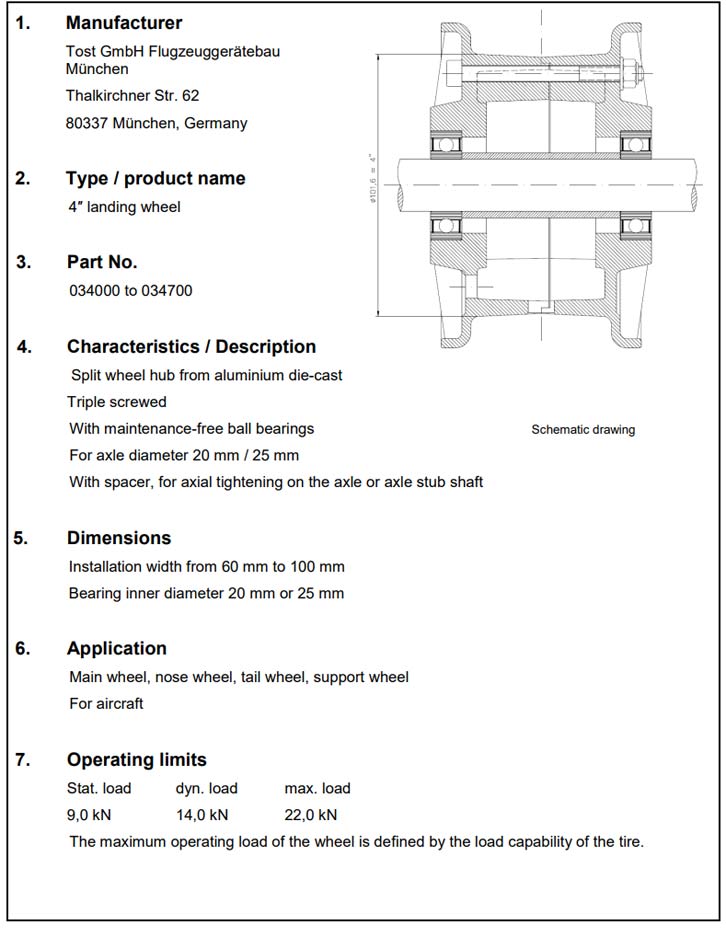



4′′ Landing Wheel Classic Seawater Resistant
|
P/N |
Desc |
Install Width mm |
Bearing ∅ mm |
Tire Size
|
Weight g W/O TIre |
Type of Hub |
| 034002 | 4′′ LR Classic 85-20 seawater resistant | 85 | 20 | 4.00-4/3.00-4 260×85 |
1010 | Two-Part |
| 034018 | 4′′ LR Classic 85-15 seawater resistant | 80 | 15 | 4.00-4/3.00-4 260×85 |
1045 | Two-Part |
| 034325 | 4′′ LR Classic 100-20 seawater resistant | 100 | 25 | 4.00-4/5.00-4 | 1100 | Two-Part |
| 034415 | 4′′ LR Classic 60-20 seawater resistant | 60 | 20 | 2.80/2.50-4 | 870 | Two-Part |
4′′ Landing Wheel Tria
|
P/N SKU |
Desc |
Install Width mm |
Bearing ∅ mm |
Tire Size |
Weight g W/O Tire |
Type of Hub |
|
034462 6019 |
4′′ LRT Tria 60-40-20 | 40 | 20 | 2.80/2.50-4 260×85 |
645 | Two-Part |
|
034482 6020 |
4′′ LRT Tria 80-60-20 | 60 | 20 | 260×85 to 4.00-4 |
690 | Two-Part |
|
034485 6021 |
4′′ LRT Tria 80-60-25 | 60 | 25 | 260×85 to 4.00-4 |
670 | Two-Part |
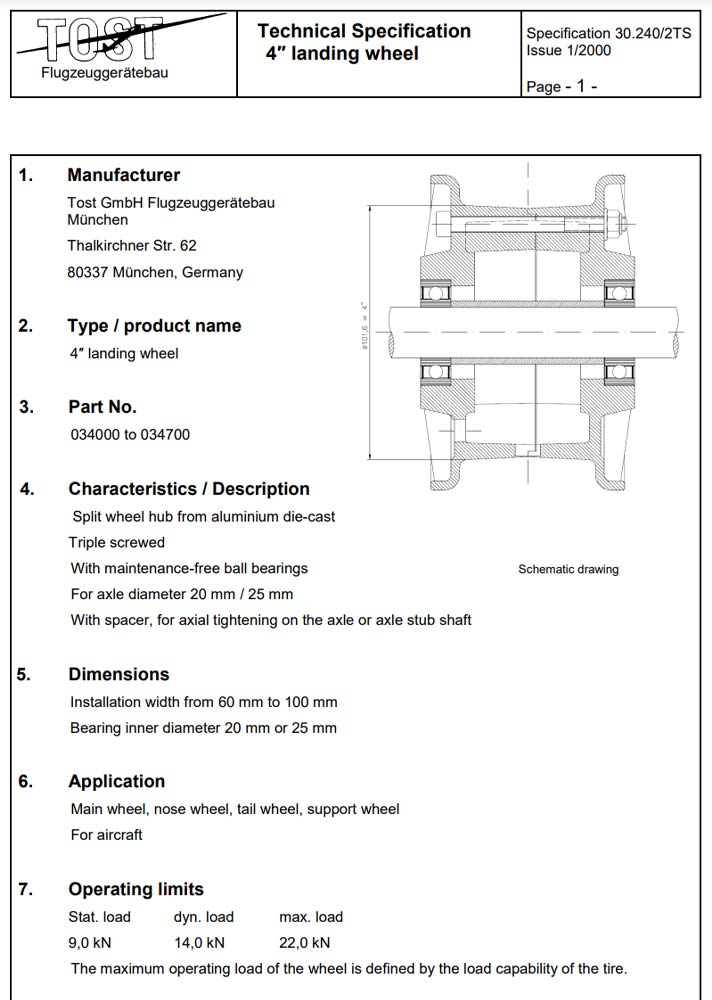

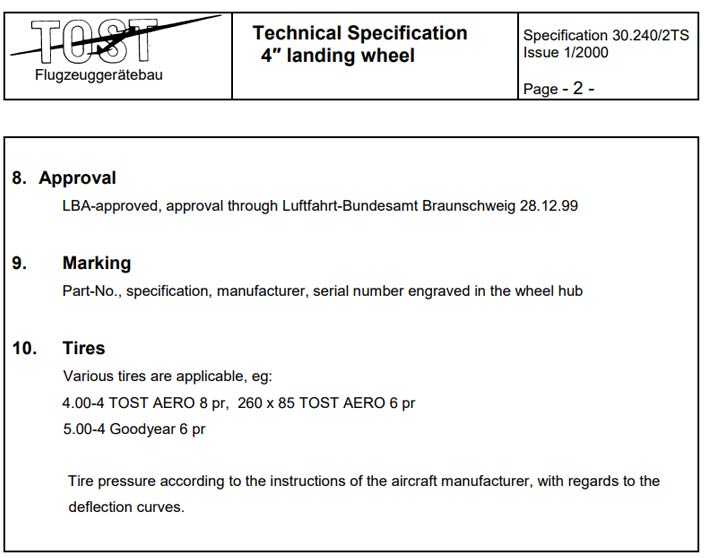

Notes to aircraft tires
Tire exchange
Removal:
- Jack up aircraft at specified point.
- Deflate tire completely before removing wheel unit.
- Do not unscrew the valve insert until the tire pressure has dropped to 0.2 bar.
- Remove wheel from axle.
- Loosen wheel bead from the hub shoulder with a rubber or plastic hammer.
- Undo wheel bolts (with 5 mm hexagon key), remove bolts and washers, split hub halves.
Mounting:
- Tires and wheel hubs must be clean and dry.
- Do not apply excessive force when replacing a wheel.
- Apply adhesive agent (or talcum powder) to the hub shoulder.
- Remove dirt, sand, labels, etc. from the tire. Apply a moderate amount of talcum powder to reduce friction between tube and tire.
Caution: Too much talcum has the opposite effect. - Fill air into tube (placed in the tire) until it is evenly round. Remove nut and washer from valve.
- Place tire (red mark at valve hole) and tube on the wheel half with the valve hole, push valve through valve hole
- Push other wheel half onto tire, match bolt holes with centering shaft.
- Insert wheel bolts, washers and any nuts, and tighten to the correct torque (M6: 9 to 10 Nm). Tighten bolts diagonally.
- Place a tire in a safety cage when inflating it to mounting pressure for the first time. If you do not have a safety cage, take great care when inflating the tire. Inflate the tire to mounting pressure. The mounting pressure is 10% more than the specified operating pressure. Check carefully for leaks. Leave to adjust at this pressure for 12 to 24 hours. Once the tire shows no leaks and is at operating pressure, the wheel unit can be mounted on the aircraft.
- Make sure that the wheel unit is mounted perfectly balanced to avoid vibration and excessive wear.
Red Dot:
Larger aircraft tires are marked with a red dot. This is an indication of the lightest spot of the tire. The valve must be placed at this point to eliminate or minimize a balance/vibration problem of the tire.
WARNING:
An inflated tire is a potentially explosive device – treat it with the correct equipment and precautions!
Notes on inner tubes
Aircraft tubes are made from natural rubber, and they are slightly underdimensioned so that it is easier to install them in a new tire. The layers of an aircraft tire are made of nylon – they therefore tend to become larger with use.
The inner tube also increases in size, adapting to the larger inside diameter of the tire. If a tube enlarged in this way is later fitted in a new tire, it can happen that it is too big for the inside of the tire, with the result that the tube may crease.
These creases may rub through during operation, causing the tube to lose pressure. Rubbing through slowly results in slow pressure loss – the pilot is thus warned before a dangerous situation arises. If the tube tears during a start, the pilot will fail
to notice that he is flying with a flat tire.
Taking into consideration all the risks involved with fitting an old tube into a new tire, it is advisable always to fit new inner tubes in new tires.
Tire maintenance instructions
- Maintain stipulated air pressure, check at regular intervals! Underpressure results in reduced load capacity and shortens service life.
- Inspect tires at regular intervals for damages, shredding, flat areas and foreign objects.
- Wheel units must be mounted perfectly balanced. Wheel imbalance can result in a damage to bearings and brake drums.
- Keep tires free of oil, grease, brake fluid and tar. Clean tires with rag soaked with petrol, then wash off with soap and water.
Features
- Split wheel hub from aluminum die-cast
- Triple screwed
- Maintenance-free ball bearings
- For axle diameter 20 mm / 25 mm
- With spacer, for axial tightening on the axle or axle stub shaft
The most popular Landing Wheels are highlighted in yellow in the "Tech Data" table. Other P/N's please allow approximately 4 weeks for delivery.
TOST 4" Landing Wheel is sold as pictured. Tire and Tube sold separately.
Always use TOST Tires and Tubes when available.
See "Tech Data" tab for Description and Technical Data.
See "Docs" tab for "TOST Tire, Tube & Wheel Selection Guide".
Various Tires and Tubes are applicable, see "Tech Data" Tab for reference.


